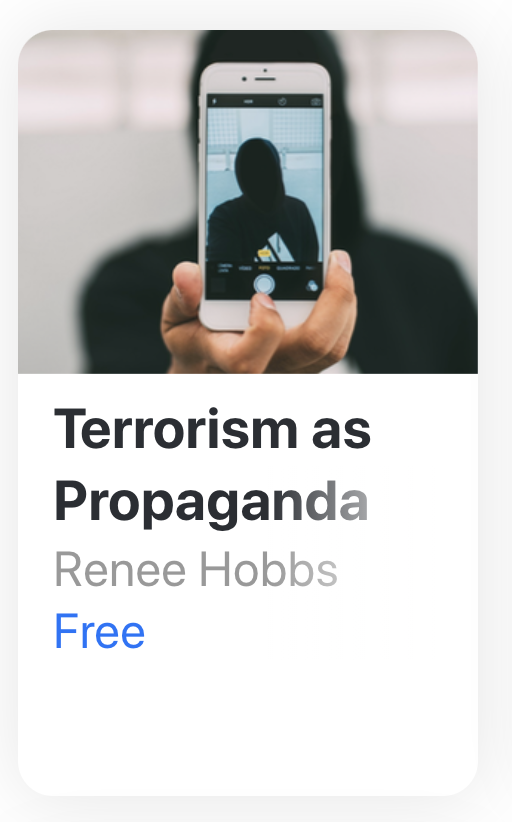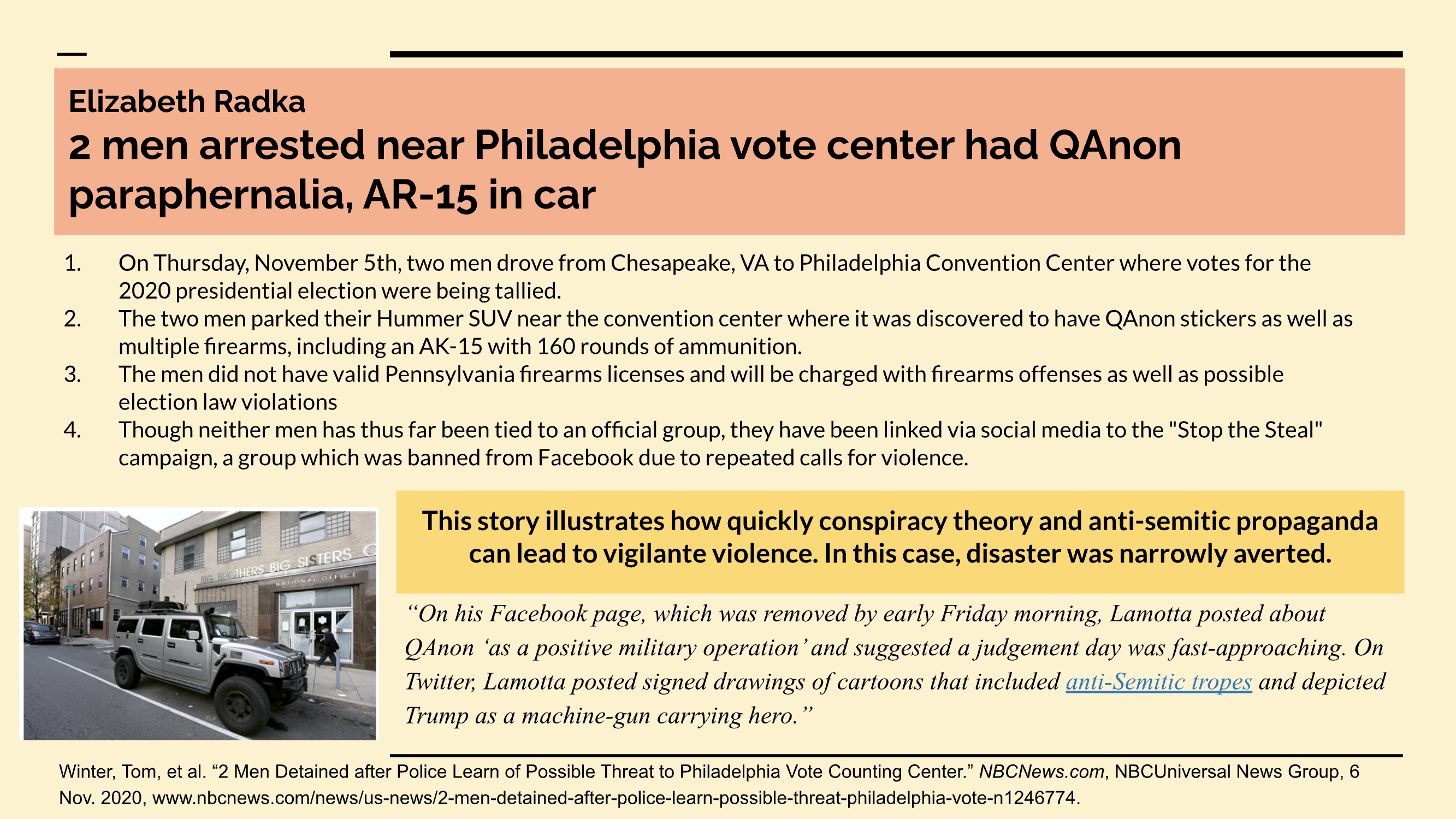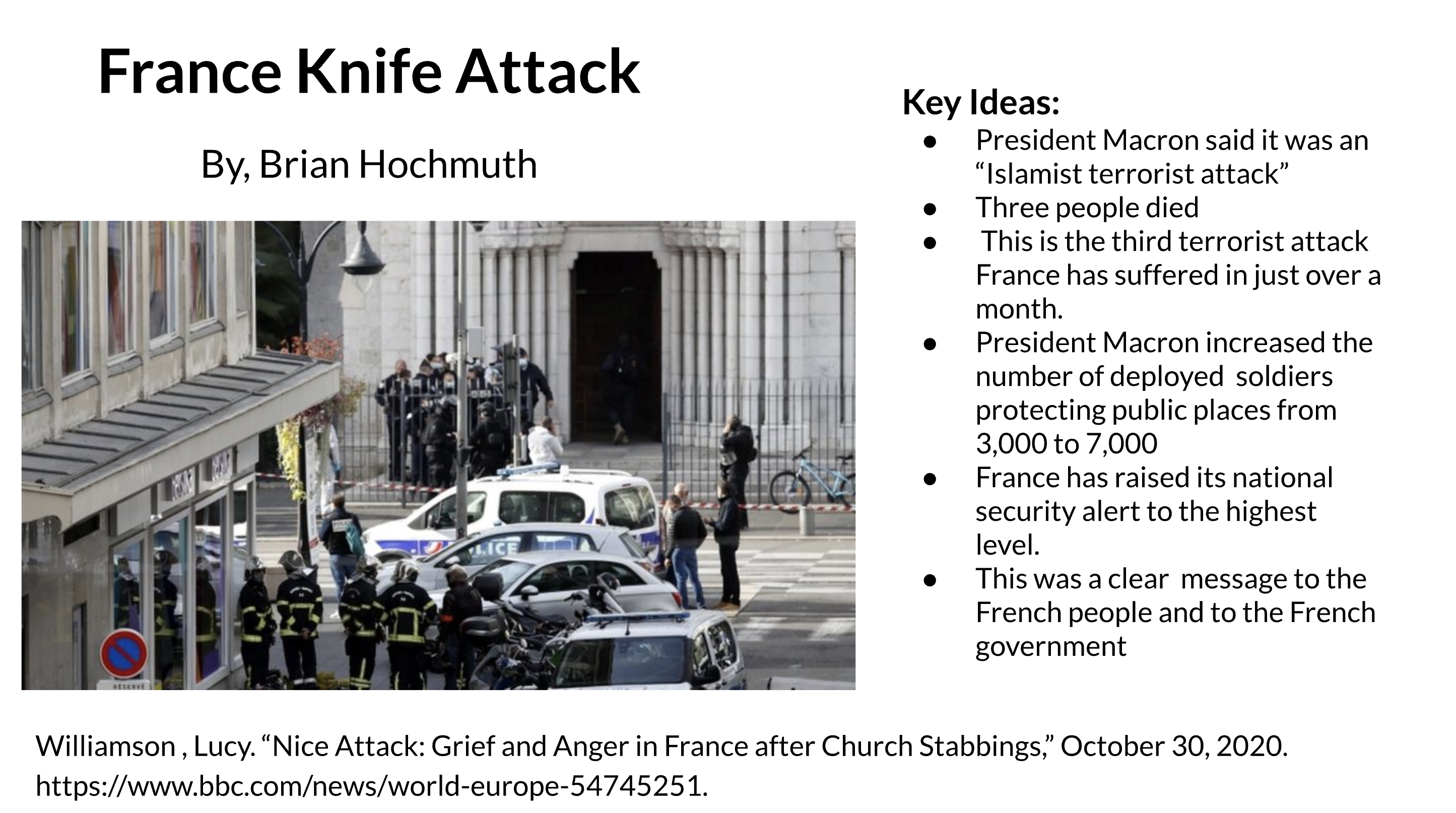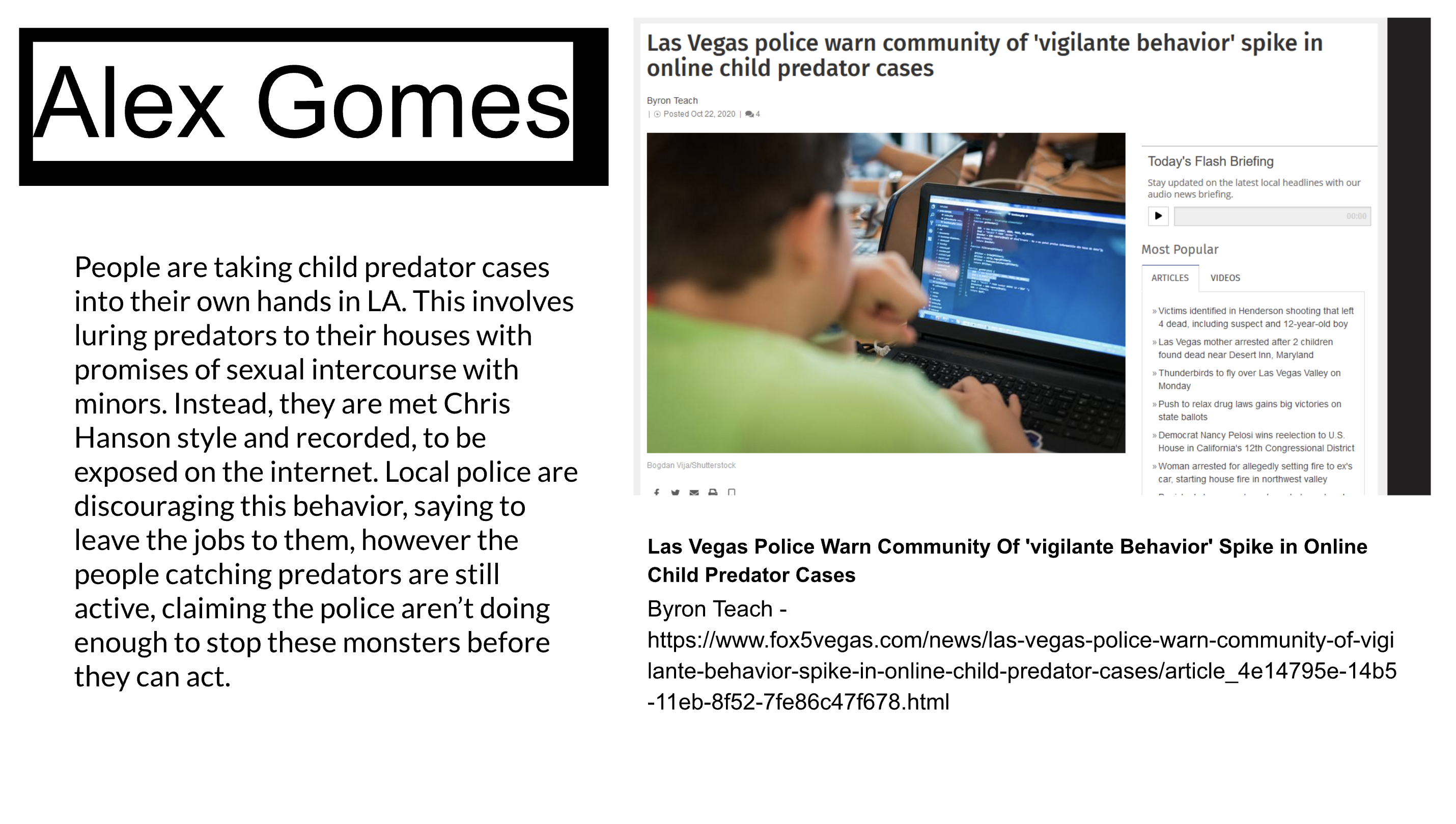Terrorism has been called “propaganda of the deed.” How could I help my students explore the idea that terrorism functions as a form of propaganda?
By Renee Hobbs
To study terrorism in the context of a class on propaganda requires some courage. We began by learning about the aftermath of the 2016 presidential election, when black and brown people all across America faced threats and physical violence. In a ProPublica video, we hear a mother describe her son’s school experience, as a peer accosted him in the hallway and said, “Are you Mexican? Cause if you are, Trump’s going to kill you.”
Is this a form of terrorism, I ask my students?
We learned that there is no single objective and internationally accepted definition of terrorism because “One man’s terrorist is another man’s freedom fighter.” But we considered several features of terrorism that makes it distinctive: (1) the extensive reliance on random and symbolic violence; (2) the failure to differentiate between civilians and non-civilians as legitimate targets; (3) the use of civilians as surrogate victims for the state; and (4) the exploitation of the media to publicize their cause.
During the week, we wondered why some groups of people use violence as a way to gain attention to their cause. We read about the terror attacks in Paris, the history of ISIS propaganda since 9/11, and we learned about how hate communities form online. We learned about militia groups and other armed groups, which have become more assertive recently. Their activities range from intervening in protests to organizing kidnapping plots targeting elected officials.
We learned about how people can be led to violence through propaganda that positions violence as a costly sacrifice motivated by sacred values. When people experience social exclusion and political marginalization, they are more receptive to messages that appeal to their sacred values. increasing people’s willingness to fight and die for those values. We recognized this phenomenon in ISIS fighters, in right-wing militias, and even in the (sometimes) productive role of violence in social change, beginning with the American Revolution and continuing on to the civil rights struggles of the 1960s.
One of the most interesting activities involved a small research project. Here it is:
Find and read a news story about one of the many ways that vigilante violence as a form of propaganda is growing in the United States or around the world.
Step 1. Review the Extremist Violence Collaborative Slide Deck and the work of other students before you begin your own work. NOTE: There are plenty of angles to this topic and thousand of news stories from hundreds of news organizations. Do not duplicate a news story that’s already in the slide deck.
Step 2. Find a print or broadcast news story about the violent actions that vigilante groups have taken as a form of propaganda to promote their cause.
Step 3. Summarize 1 – 2 key ideas from the news story on a slide and place your work on slide deck. Review the work of other students and reflect on the similarities and differences you find.
Step 4. Use complete citation format to identity your information source.
My students offered reflections on this learning experience that indicated they recognized key ideas. Brian Hochmuth pointed out that “Violence as propaganda has been a characteristic of the United States before we were even a country. From Bacons rebellion to violence during the civil rights movement to violence in the last few months. Violence can be used two ways: (1) to ensure your message is heard and (2) to have your group appear as a victim. Maren Drake wrote: “Our core core beliefs (or sacred values) are some of the most powerful influencers over our actions. As we’ve discussed throughout this course, when our beliefs are challenged, we take it as threat, and violence sadly is some people’s choice reaction to this threat.”
Elizabeth Radka noted, “Propaganda is designed to help the human brain bypass logical and critical thought to form a belief so strong that it leads to action.” Frankie Watson pointed out, “Social media is an extremely powerful tool for convincing someone of committing a violent act. It is shocking to me that some people would let their families be hurt in order to defend their sacred beliefs, and that these beliefs and loyalty can be manipulated through social media.”
Exploring terrorism as propaganda is an important topic for students who are developing their media literacy competencies. I you are interested in using the readings and videos I assembled for this unit of instruction, you can access it on the Mind Over Media online learning platform: https://www.mindovermedia.us/online-learning





